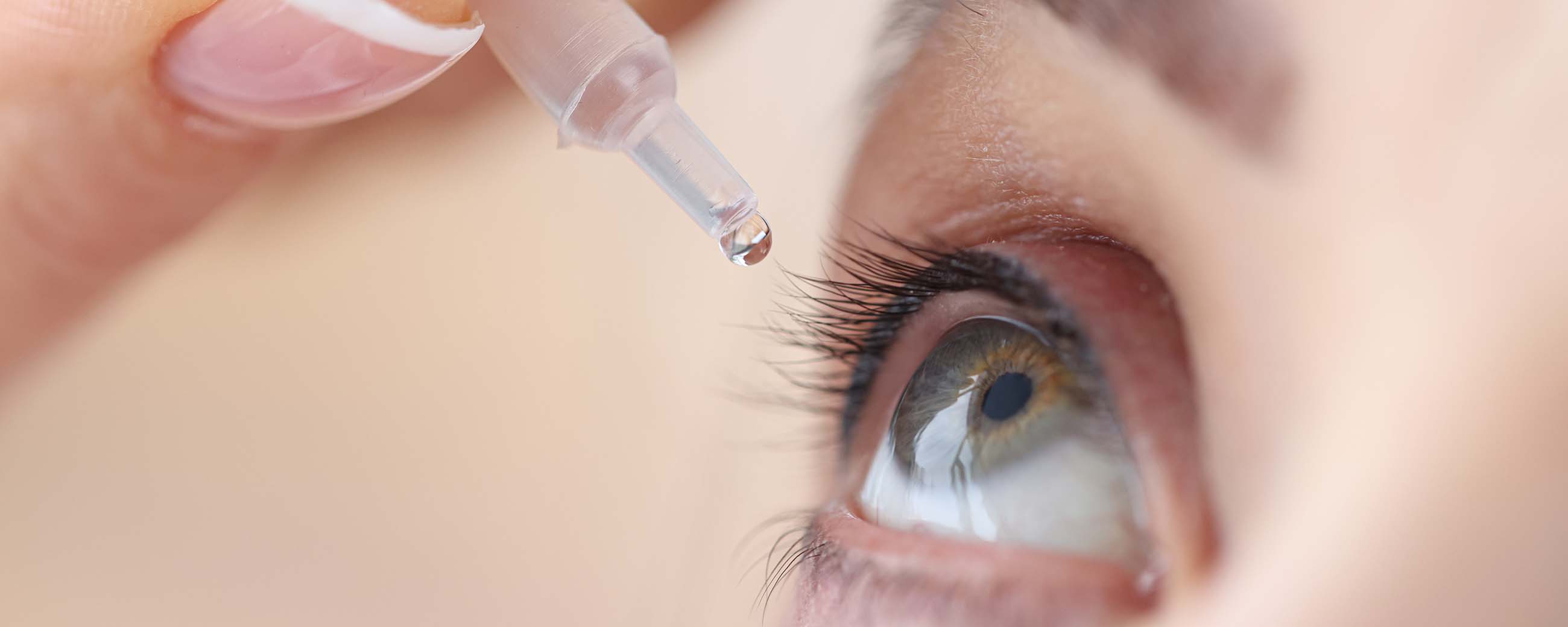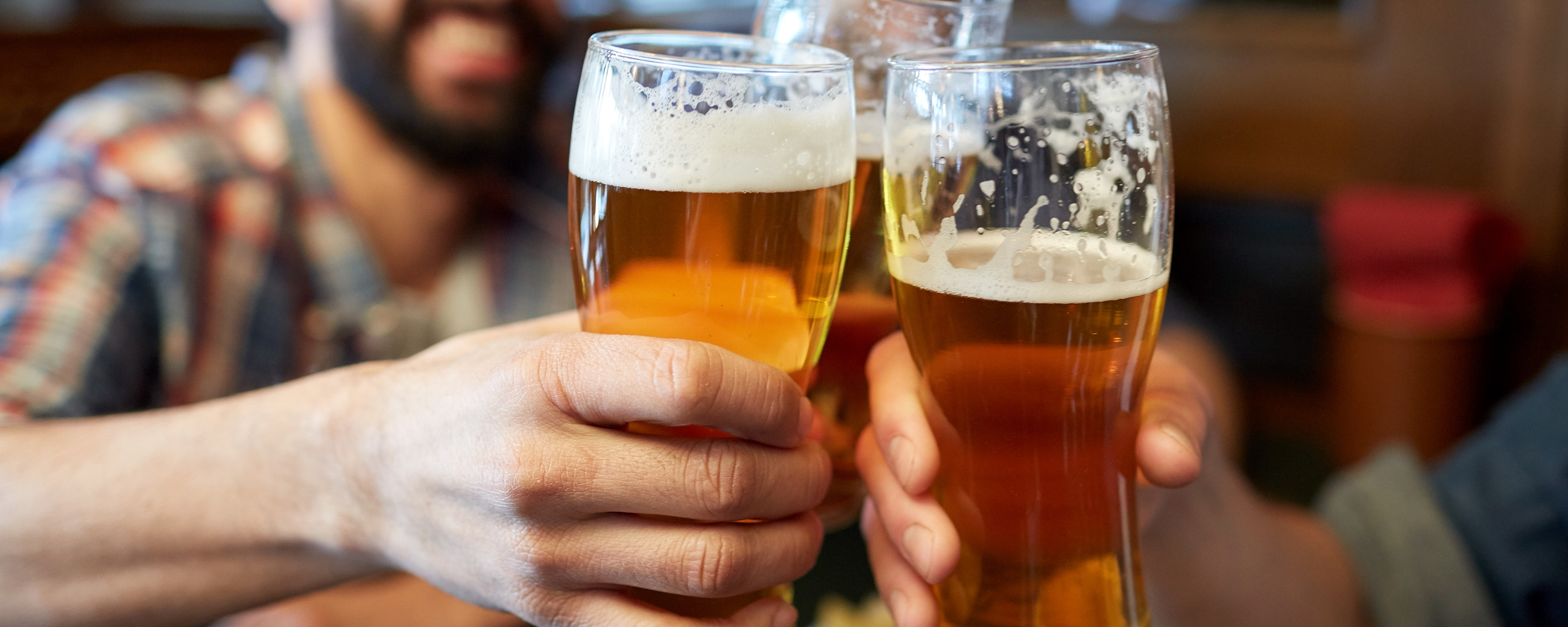
Reversing Diabetes 101 with Dr. Sarah Hallberg: The Truth About Carbs, Blood Sugar and Reversing Type 2 Diabetes

You may have heard a lot about type 2 diabetes, but do you know what it actually does to your body?
In this video series, we’ll explore the causes of type 2 diabetes and how to reverse it. To learn more about how Virta works visit our page on our type 2 diabetes reversal treatment.
1: How food affects blood sugar
What happens when we eat carbohydrates, protein, and fat?
Your blood insulin responds very differently to different macronutrients. Fat does not impact blood insulin levels. Carbs have a high impact, and protein impacts them moderately, but fat has no impact.
Carbs and fats can both provide energy for the body—but not at the same time. When carbs are abundant in the diet, carbs function as the preferred fuel source. But when carbs are limited in the diet, fat becomes the preferred fuel source.
When you reduce your intake of one macronutrient, you have to increase your intake of at least one other macronutrient to avoid feeling hungry and not have enough energy.
In a low carb, high-fat diet, fat provides you with the energy your body needs, and it also reduces hunger and cravings.
2: Carbohydrate intolerance and insulin resistance
Type 2 diabetes is a disease of high blood sugar. It can also be thought of as carbohydrate intolerance or insulin resistance. That means when someone with type 2 diabetes eats carbohydrates, it causes their blood sugar to rise above a healthy level.
Everyone has a different carbohydrate tolerance. One person may be able to eat a carb-heavy diet with no problem, and another may get blood sugar spikes and gain weight from eating very few carbohydrates. Both people can be healthy, as long as they are eating within their personal tolerance levels.
What is a carbohydrate?
It’s one of the main energy sources in many foods, including bread, pasta, fruit, and starches. When carbohydrates are digested, they are broken down into glucose in the blood. You may know this as blood sugar.
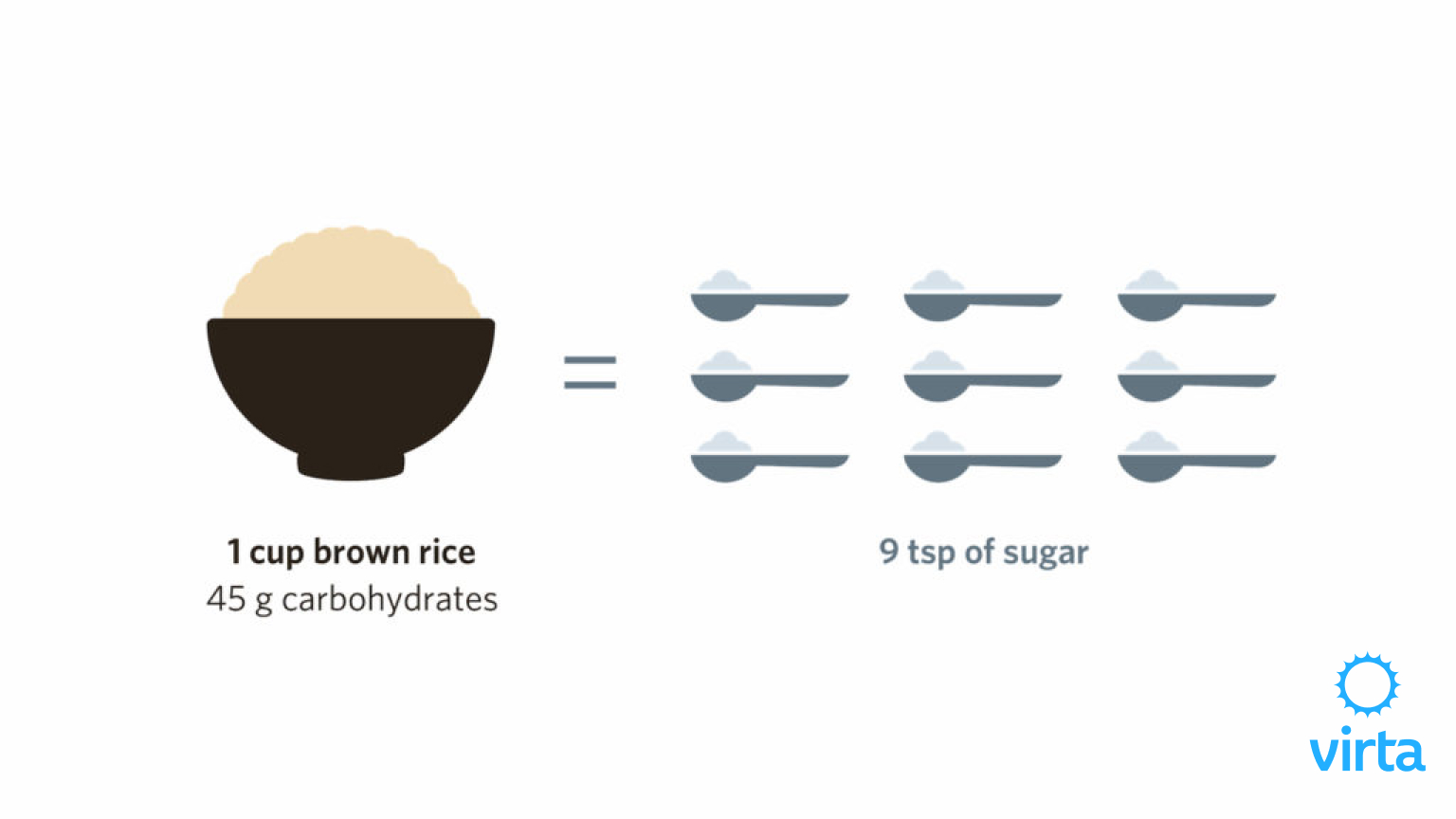
The body allows for only 1 teaspoon of sugar per 5 liters of blood, but there are 9 teaspoons in a cup of cooked (white or brown) rice.
The excess glucose in your blood is pulled out by the hormone insulin. In a person with a high carbohydrate tolerance, this process works well and excess blood sugar is promptly removed.
In a person with carbohydrate intolerance, type 2 diabetes, or prediabetes, this system breaks down. The body loses its insulin sensitivity and more and more insulin is required to remove the excess blood sugar. As a result, blood sugar levels remain high and insulin levels are high as well, and these high insulin levels can make your body even less sensitive to insulin.
The result? The cycle will happen over and over again and the problem will get worse.
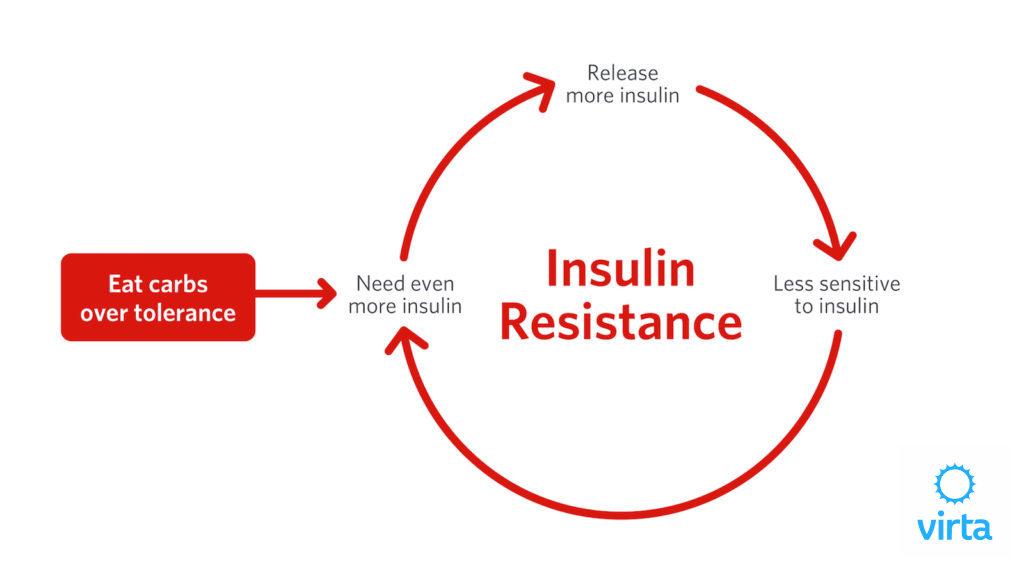
3: How type 2 diabetes became an epidemic
52 percent of adults in the United States have type 2 diabetes or prediabetes, which means that you are more likely than not to have diabetes or be developing it. How did we get here?

Well, in 1977, the U.S. government recommended new dietary guidelines. Remember the food pyramid?
The food pyramid recommended 6-11 servings of carbs per day, and very little fat—a low-fat, high-carb diet. As we outlined in our last video, type 2 diabetes is a disease of carbohydrate intolerance. Someone with type 2 diabetes or prediabetes has a low carbohydrate tolerance, so eating carbs will lead to exaggerated blood sugar spikes. While those with a high carb tolerance may be able to eat a carb-heavy diet and remain healthy, someone with a low carb tolerance will experience chronic high blood sugar and likely even weight gain if they eat a high-carb diet.
Soon after these guidelines were recommended in 1977, type 2 diabetes prevalence increased dramatically, and it hasn’t slowed down since.

These dietary recommendations have made high carb, low-fat foods a staple of the American diet. “Healthy” foods like fruit-on-the-bottom yogurt, sugary protein shakes and low-fat processed grains flooded the market. The standard American diet began to include more sugary drinks and sodas, as well as more processed grains. Since all carbohydrates (even complex carbs) are broken down into sugar in the body, these dietary recommendations meant that the average blood sugar of Americans began to rise, and the diabetes epidemic began to grow.
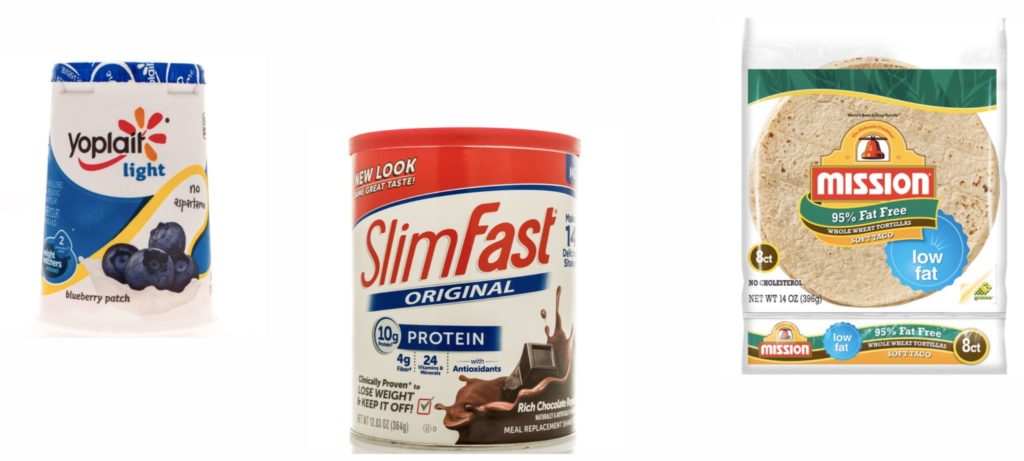
4: Treating type 2 diabetes—and why 'eat less, exercise more' doesn't work
With the explosion of type 2 diabetes, there has also been an explosion in the treatments offered. Many new drugs have been brought to market, and there are hundreds of lifestyle interventions to choose from.
The problem with a medication-based approach is that you’ll most likely have to be on these medications for the rest of your life. They are expensive and many come with a host of side effects. The medication approach focuses on management of diabetes, not reversal. Taking medications for type 2 diabetes combats the end result, which is rising blood sugar, but does not address the root causes—insulin resistance and carbohydrate intolerance.
Shifting the paradigm to diabetes reversal, however, means addressing the root causes of type 2 diabetes.
Most lifestyle interventions focus on eating less and exercising more. But many patients have tried this and have seen minimal results, while also fighting unsustainable hunger and cravings. The problem with these programs is that they tend to be high in carbs, even if they are cutting back on calories. When you eat a high-carb diet, the resulting increase in your blood sugar triggers an insulin response in your body, and insulin blocks your body’s ability to burn fat. Insulin actively blocks the breakdown of stored body fat, meaning that as long as insulin is high, it will be very difficult to lose weight, even if you are eating very little.
When you eat too few calories, you typically feel exhausted and experience hunger and cravings. However, a low-carb, high fat diet can help keep your blood sugar and insulin levels down. It may seem counterintuitive, but to lose fat, you have to eat fat. This type of low-carb, high-fat diet is called a ketogenic diet.
* I do not recommend making significant dietary changes without physician supervision, especially if you are on any medications.
5: The history and safety of ketogenic diets
There are cultures who have thrived for centuries on high-fat, low-carb diets, such as the Masai warriors and Inuits.

Ketogenic diets have been used as medical treatments for a long time—specifically, to treat children with epilepsy. In the past 20 years, many endurance athletes have started adopting low carb and ketogenic diets for improved performance.
6: Research on ketogenic interventions for type 2 diabetes
Clinical trials have proven a low-carb, high fat diet to be significantly more effective than programs that encourage you to eat less and exercise.
In our clinical trial, Virta patients lost almost 12% of their starting body weight in 6 months¹—that's nearly 3x the weight loss of commercially available weight loss programs.

Low-carb, high fat lifestyles have not demonstrated an increased risk in cardiovascular disease. Patients in our clinical trial also had a significant reduction (22%) in triglycerides, which are associated with risk for cardiovascular disease, in just 10 weeks.¹
56% of patients were able to lower their HbA1c to below the diagnostic threshold for type 2 diabetes, and 47.7% were able to reverse their diabetes, which we define as lowering their HbA1c below the diagnostic threshold (6.5%) while eliminating their diabetes-specific medications (excluding Metformin).¹
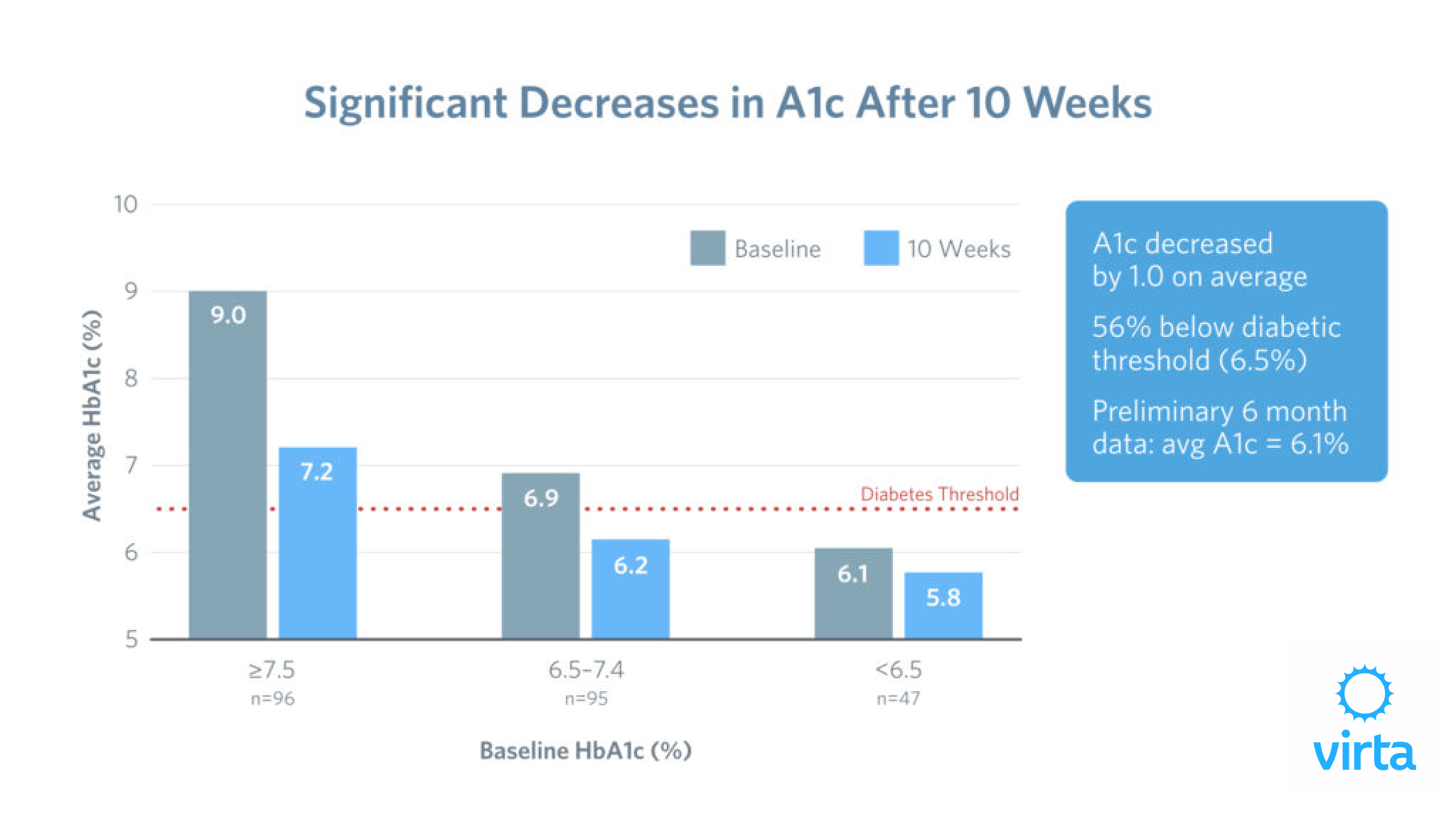
7: Ketogenic meals and food options
There are plenty of delicious high-fat, low-carb options available. Let’s go through a sample day on a ketogenic diet.
Breakfast
You can enjoy breakfasts like scrambled eggs with cheese and sausage, bacon and fried eggs cooked in butter, cream cheese pancakes, full-fat yogurt with raspberries and almonds or even a breve latte from Starbucks.

Lunch
Salads are always a good option for lunch - load it up with meat or tofu, cheese, avocado, veggies and a full-fat dressing like olive oil or ranch. In a rush? Grab a lettuce-wrapped burger from any fast food outlet. Like to cook? Try steak and brussels sprouts in butter, salmon and asparagus with hollandaise sauce, or a Thai curry made with tofu, coconut milk and green beans.
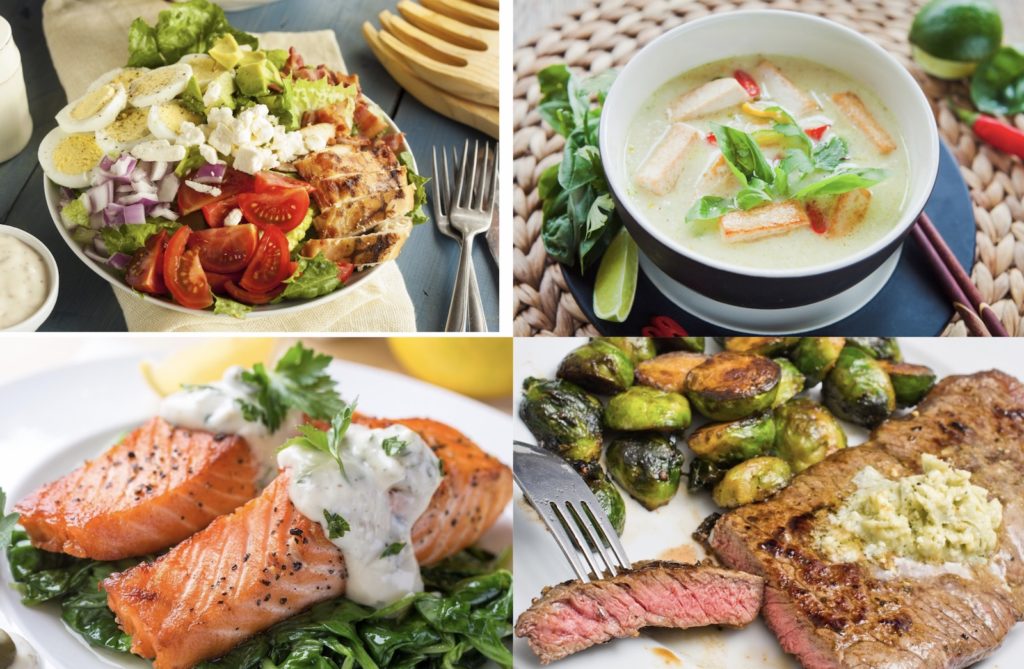
Snacks
For snacking, try salted nuts and olives, celery and almond butter, or full-fat yogurt.
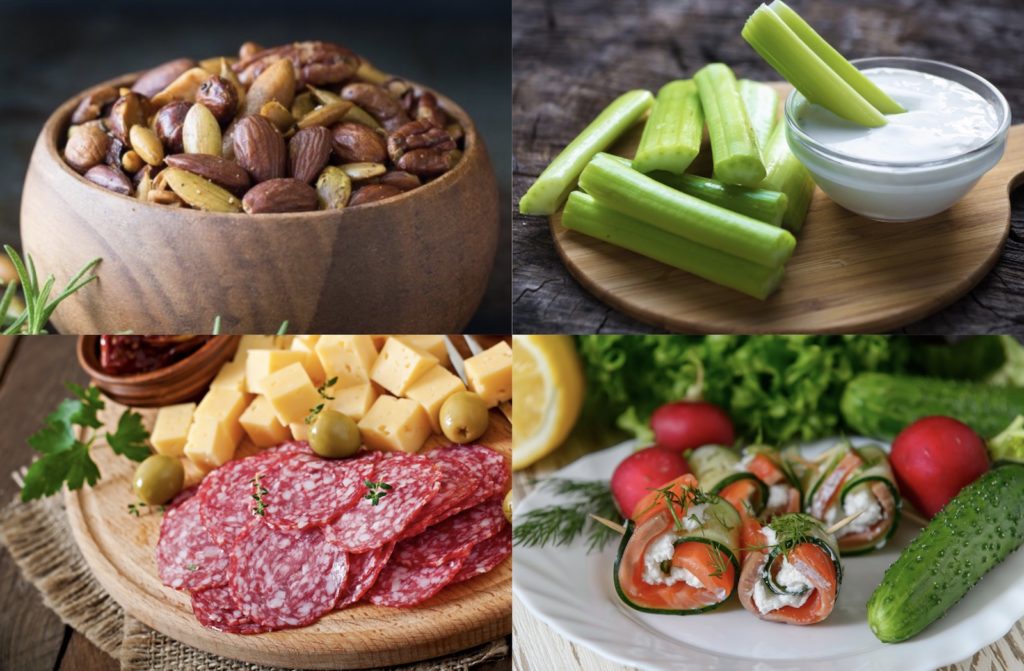
Dinner
Prefer to dine out? Try a salad from Chipotle or surf and turf with broccoli from Applebee’s. Feel free to have a glass of wine or scotch. Want something sweet? Try some low-carb ice cream, dark chocolate, almond flour pancakes or berries with whipped cream.

This blog is intended for informational purposes only and is not meant to be a substitute for professional medical advice, diagnosis, or treatment. Always seek the advice of your physician or other qualified health provider with any questions you may have regarding a medical condition or any advice relating to your health. View full disclaimer
Are you living with type 2 diabetes, prediabetes, or unwanted weight?

- McKenzie A, Hallberg S, Creighton BC, Volk BM, Link T, Abner M, et al. A Novel Intervention Including Individualized Nutritional Recommendations Reduces Hemoglobin A1c Level, Medication Use, and Weight in Type 2 Diabetes. JMIR Diabetes; 2017;2(1):e5.



